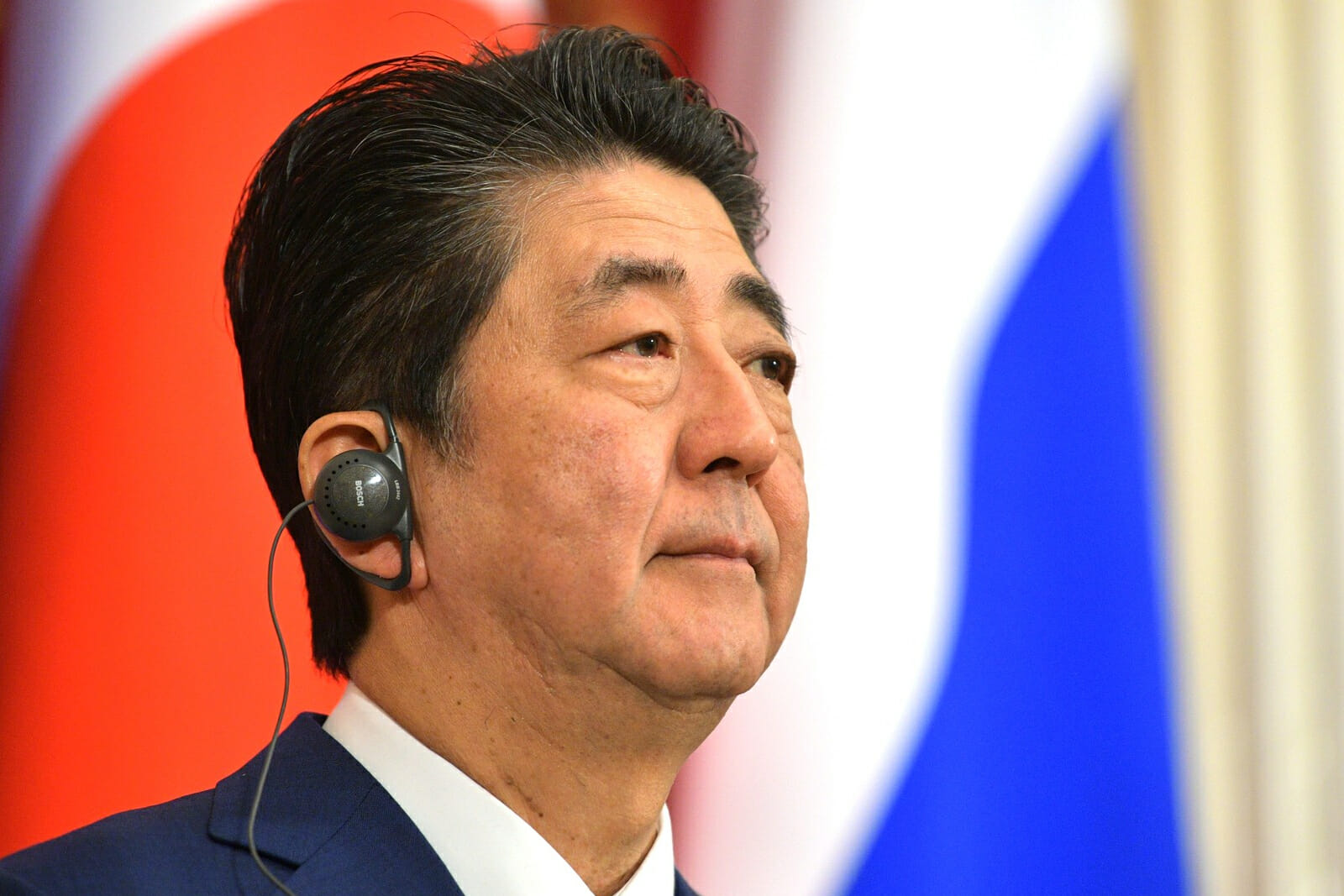
Understanding Shinzo Abe’s Historical Revisionism
Myth: Shinzo Abe is a leading member of the team of world and Asian democracies standing up to China in the name of universal values like “freedom of navigation” and to help ensure the shared peace and prosperity of Asia. Reality: Shinzo Abe is a revisionist nationalist using friction with China to pursue Japanese national interests, put Japan on the right side of a zero-sum economic equation opposite the PRC, maximize Japan’s independence of action as a regional hegemon, hopefully peacefully, but if not.
The mission for the Western media: Manage the cognitive dissonance between comforting myth and disturbing reality for the sake of its faithful readers. Challenge: Explain away Prime Minister Abe’s Boxing Day visit to the Yasukuni Shrine. First of all, please note that Yasukuni is not Japan’s Arlington Cemetery. The role of the national repository of Japan’s war dead is filled by the Chidorigafuchi National Cemetery. Yasukuni is a right-wing revisionist theme park that provides sinecures for politicians of Abe’s LDP party on its board. It’s too creepily ultranationalist even for the Japanese emperor himself to visit.
Jeffrey Kingston of Temple University’s Japan Center provided a nice takedown of the Yasakuni myth back in August 2013 for Bloomberg:
Yasukuni is ground zero for an unrepentant view of Japan’s wartime aggression. During World War II, the shrine served as the “command headquarters” of State Shinto, a religion that deified the emperor and mobilized Japanese subjects to fight a holy war at his behest. The private foundation that runs Yasukuni only added the 14 most controversial “souls” [Class A war criminals—ed.] — surreptitiously — in 1978. The shrine’s political mission is on blatant display at the adjacent Yushukan museum, run by the same foundation. There, the Class A war criminals are portrayed as martyrs. Japan’s war in China is supposed to have suppressed banditry and terrorism, while its invasion of the rest of Asia is represented as a war of liberation from Western colonialism. It is telling that Emperor Showa (Hirohito), once the head priest of State Shinto, confided to an aide that he stopped visiting Yasukuni after 1978 precisely because the shrine had been tainted by the presence of the Class A war criminals. This explicit politicization of the site also explains why his son, current Emperor Akihito, has maintained the imperial household’s embargo on visits.
Abe’s historical revisionism about World War II, as represented by his Yasukuni visit, is not a generous if misguided exercise in greatest generation nostalgia meant to soothe toothless, aging nationalists with a last glimpse of imperial twilight. Historical revisionism has an unmistakable contemporary resonance and drives a current political agenda. For instance, it underpins Abe’s burgeoning security relationships with India and Myanmar, both of whom were unhappy British subjects not at all immune to the decolonization blandishments of Imperial Japan in the 1940s.
The only foreigner commemorated at Yasukuni (with a stele) is Radha Binod Pal, an Indian jurist and decolonization enthusiast, whose suppressed dissent to the Tokyo war crimes tribunal verdict has become a sacred text for Japanese historical revisionists, and was approvingly cited by Manmohan Singh in his high-profile anti-Chinese bromance with Shinzo Abe.
I refer interested readers to my article in Japan Focus, which covers Abe’s celebration of Pal and the anti-colonial (as well as anti-Chinese) foundation of current Indo-Japanese relations in convincing detail.
As for Myanmar, Aung San Suu Kyi’s father and national hero Aung San did a lot more than flirt with the role of collaborator with the Japanese occupation of Burma. He was in charge of anti-British guerilla ops on behalf of the Japanese government, served as War Minister in the occupation cabinet, and was personally awarded the Order of the Rising Sun by Emperor Hirohito before he came to his liberal democratic senses (or realized that Japanese rule was headed for collapse) and became leader of the resistance.
The Japanese presence in Burma is remembered nostalgically by a lot of Japanese and apparently more than a few Burmese locals and sustained a flood of Japanese veteran tourism and government and private aid projects since the 1950s. Japan cultivated a special relationship with Myanmar even during the worst junta years, and Abe has taken advantage of Myanmar’s opening to the West to jump in diplomatically and commercially and work to displace Chinese influence. And of course Abe himself came from a long line of conservative politicians, most notoriously on his wife’s side Nobusuke Kishi, who played a key role in the occupation of Manchukuo, served in the Tojo cabinet during World War II, and was detained as a candidate for Class A War Criminal status until his release in 1948. The most awkward and significant reality of Shinzo Abe’s Yasukuni visit is that the villain at the heart of Japanese historical revisionism is not China; it is the United States.
The core of Abe’s historical revisionism is not just that the bandit-infested territories of China and Korea demanded Japanese tutelage in the 1930s and 1940s, but also that the Japanese Empire was leading the fight of the oppressed peoples of Asia against British colonialism and American imperialism—in other words, the real war crime of World War II was U.S. aggression against Japan. The United States, and its pretensions to moral superiority over Japan, as well as China and Korea’s presumptuous claims to virtuous victimhood, were a target of Abe’s Yasukuni visit.
As I have pointed out before, the Chinese state media frequently emphasizes the shared PRC-US interest of maintaining the official World War II narrative of “evil Japan,” not only for the transitory Chinese pleasure of guilt-tripping Tokyo, but because the US self-assigned role of Asian lawgiver and restraint on Japanese militarism is one of the main justifications for “pivoting” into Asia instead of just giving Japan enough guns, bombs, and backing to manage the China containment show on its own. Remember, Premier Wen Jiabao used his last official trip to Europe to go to Potsdam, of all places, to celebrate the Potsdam Declaration, the 1945 call by the US, Britain, and China for Japan’s unconditional surrender and specifying occupation until Japan had a “peacefully inclined” government.
This context provides considerable heartburn for purveyors of the “Abe as unwilling warrior” myth that presents Japan’s newly aggressive foreign policy as a reaction to the “China threat” to national security, and for that matter, the rather ridiculous assertion that Abe is a regretful victim being pushed into visiting Yasukuni in order to appease his fire eating right-wing base. Abe pretty much is the base.
日本のために尊い命を犠牲にされたご英霊に対し、尊崇の念を表し、御霊安らかなれとご冥福をお祈り致しました。 同時に、戦争で亡くなられ、靖国神社に合祀されない国内、諸外国の人々を慰霊する鎮霊社にも、参拝いたしました。… http://t.co/3p6B5tbrCE
— 安倍晋三 (@AbeShinzo) December 26, 2013
On the other hand, it provides considerable support for an understanding of the Abe reality: that Shinzo Abe is deliberately and carefully stirring the China pot in order to exacerbate and highlight the polarization between China and Japan to justify his ongoing reconfiguration of Japan’s regional role into independent local hegemon at the expense of U.S. prestige and power in Asia.
Abe manufactured a crisis out of the Chinese declaration of its Air Defense Identification Zone; now he exploits and prolongs the furor by sticking a finger in China’s eye with the Yasukuni visit. In other words, instead of trending toward stability (and making things easier for the United States), Abe is escalating, enhancing instability (and making things more difficult for the US). Strange behavior for an ally. Understandable actions for a regional actor impatient to assert its independence vis a vis the US. Abe is a man in a hurry. He realizes that the intersection of LDP hubris-driven corruption and incompetence and an eventual resurgence of Japan’s other political parties lies somewhere in his future. He is determined to re-establish Japan as a full-fledged regional power before he leaves office. Instability and tensions with China work toward this end, and that’s why he does things like visit Yasukuni.
This state of affairs is perfectly understood by the PRC government, and Chinese state media has been harping on Abe’s incremental security reforms and his efforts to develop a regional network of Japan-centric alliances, even before he takes the momentous step of revising the pacifist constitution and enabling formal “collective security” treaties that would permit a Japanese military response if an ally, and not Japan itself, were threatened. It is also, I think, well understood by the U.S. government, which has been performing an increasingly difficult balancing act as Japan sails off on its own independent regional security policy. For the sake of its own “pivot” agenda, which is built on the idea of China containment, the United States has denied itself the “honest broker” role in a balance of power network and is instead trying to herd cats (and a Japanese panther) to maintain an anti-China picket line.
As the Japanese government understands (and, I would hope, U.S. diplomats now sincerely regret), the pivot doctrine has fatally circumscribed US ability to push back on Japan (unless Japan does something absolutely crazy illegal and aggressive, which is not Mr. Abe’s MO). Prime Minister Abe knows he can go to Yasukuni and elicit nothing more than anxious squealing from the U.S. State Department.
Western corporate media outlets, I believe, haven’t gotten the memo since they have totally tongue-kissed, climbed into bed, and had blissful liberal democratic sex with the valorized dream of the world’s democracies led by the United States working hand in glove with Japan to stand up to the PRC’s authoritarian regime. The realization that the new Japanese policy is based on the idea that the Pacific War was a gigantic regional war crime by the United States instead of the first triumph of American democracy over Asian authoritarianism (and the successful template for a certain current US effort against another alien, pushy Asian power whose initials are “PRC”) simply doesn’t seem to sink in.
The result is utterly gormless reporting (sorry, Reuters) along the lines of:
Paying respects at the shrine is part of Abe’s conservative agenda to restore Japan’s pride in its past and recast its wartime history with a less apologetic tone. He also wants to ease the restraints of Japan’s post-World War Two pacifist constitution on the military. Some political experts said Abe had probably calculated that his relatively high voter ratings, based largely on hopes for plans to revive the economy, could withstand any criticism over his Yasukuni pilgrimage, which would also shore up support in his conservative base. He may also have felt that with ties with Beijing and Seoul in a deep freeze, a visit would hardly make things worse.
Given the conflicted (and self-inflicted) nature of US pivot policy, I expect the big media reporting to continue to hew to the more-sorrow-than-in-anger angle that “For some mysterious reason Abe is going out of his way to irritate PRC jerks and why is he antagonizing South Korea at the same time even though South Korea is a democracy too and since Japan is a democracy they should be buddies oh never mind,” while continuing to ignore the most important reality: that events in Asia are increasingly slipping away from the grasp of the United States and into the hands of Japan—into the hands of Shinzo Abe, who is fundamentally suspicious of U.S. pretensions to leadership and perhaps even questions US regional legitimacy as anything more than a fading power still trying to trade on its legacy of Japanese conquest more than half a century ago.
Thanks, “pivot to Asia.”

